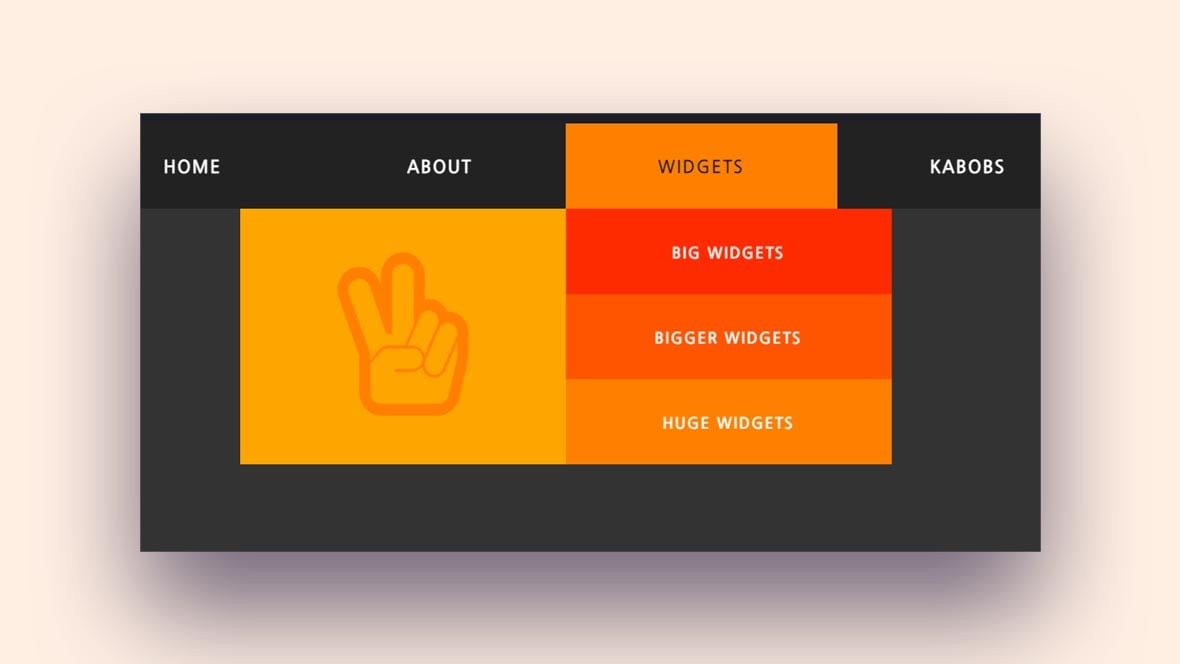
See the Pen CSS Responsive Navigation Menu by Ahmad Hjazy 6. Perhaps the most impressive part is how this entire example solely uses CSS. Not to mention the responsive style is surprisingly usable. The hover effects are a bit delayed yet undoubtedly interesting. It’s a vertical menu with navigation links mimicking the periodic table of elements. Here’s a unique design using pure CSS for the navigation. See the Pen Responsive navigation multilevel by Stéphanie Walter 5. I would almost opt towards a block-level list of links for mobile, but this works much better considering the sub-menu.

When resized, you’ll notice the navigation uses a sliding dropdown menu instead. The links have a little more pizzazz with a custom selected feature and a nice hover effect to boot. This snippet is just one example featuring a bright red, responsive navigation. Red Dropdown Menuĭeveloper Stéphanie Walter has built some exciting projects for the web. See the Pen Fully responsive navigation with CSS animations and jQuery by Jan Czizikow 4. It’s clean, and features some great animation features alongside the responsive techniques. I would mostly recommend this type of navigation for a sales page or a simple portfolio site. Not to mention, they automatically resize to the perfect fit regardless of your browser size. The links scroll down with a smooth animation but don’t leave you waiting for too long. This is a perfect example of single-page navigation in action. Single page navigation menus need love just like the any other. See the Pen Responsive Dropdown Navigation Bar by Tania Rascia 3. Still, for such a clean design, I’m surprised at how much versatility this snippet offers developers. You could change that to CSS-only, but you’ll lose the click trigger. The sub-menu links only appear on a click event which is handled by jQuery. In this case, you’ll find a simple list of links with a very small dropdown. It’s a strong alternative to the more basic navigations that only feature a handful of menu items. If you need longer dropdown items in your navigation then this menu might work better. See the Pen Responsive Navigation Demo w/ Kube by Johnny Mango 2.

This effect can be altered on a “live” website with the same navigation, but it’s useful in this example to show off the page’s UI/UX. You’ll notice the navigation has an interesting feature when you hover and auto-focus on links. This responsive example – created by Johnny Mango – shows how far you can take a website’s prototyping phase. You can learn more at its official website, CSS for JavaScript Developers.Start Downloading Now! 1. My course features videos, minigames, workshops, and so much more. It's built on the same tech stack as this blog, so it features the same style of embedded interactive widgets, but it goes even further. In fact, this blog post is derived from one of the lessons in the Animations module! If you enjoyed this tutorial, you might be pleased to know that I've built a CSS course.
Css hover effects exept table header how to#
They can teach people how to use your products.

They can offer feedback, and communicate in a more-visceral way than copy alone. In aggregate, well-executed animations can have a surprisingly profound effect on the overall user experience. A single transition here or there won't make or break an experience, but it adds up. Web animations are more important than most developers realize. There's a surprising amount of depth to them even in this long-winded blog post, I've had to cut some stuff out to keep it manageable! We can fix this problem by adding the following CSS property:ĬSS transitions are fundamental, but that doesn't mean they're easy. When the CPU hands it to the GPU, and vice versa, you get a snap of things shifting slightly. Here's the problem: GPUs and CPUs render things slightly differently. This is known as “hardware acceleration”. GPUs are very good at doing these kinds of texture-based transformations, and as a result, we get a very slick, very performant animation. Instead of rasterizing the pixels on every frame, it transfers everything to the GPU as a texture. When we animate an element using transform and opacity, the browser will sometimes try to optimize this animation. This happens because of a hand-off between the computer's CPU and GPU. Notice how they appear to glitch slightly at the start and end of the transition, as if everything was locking into place? Link to this headingHardware Accelerationĭepending on your browser and OS, you may have noticed a curious little imperfection in some of the earlier examples:


 0 kommentar(er)
0 kommentar(er)
